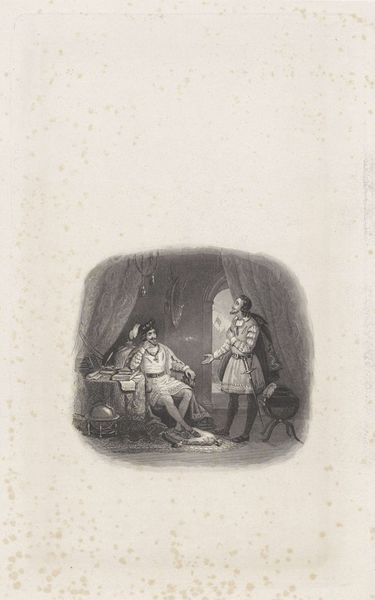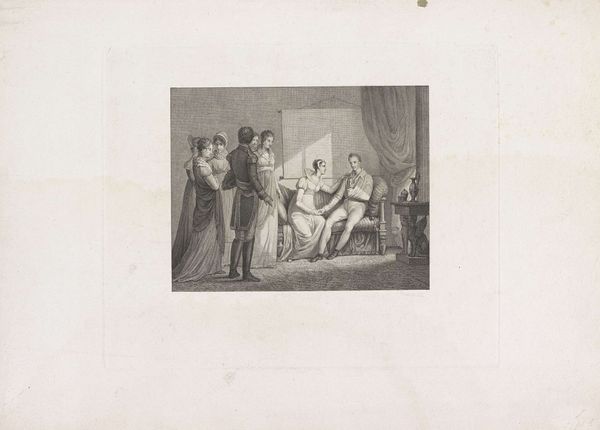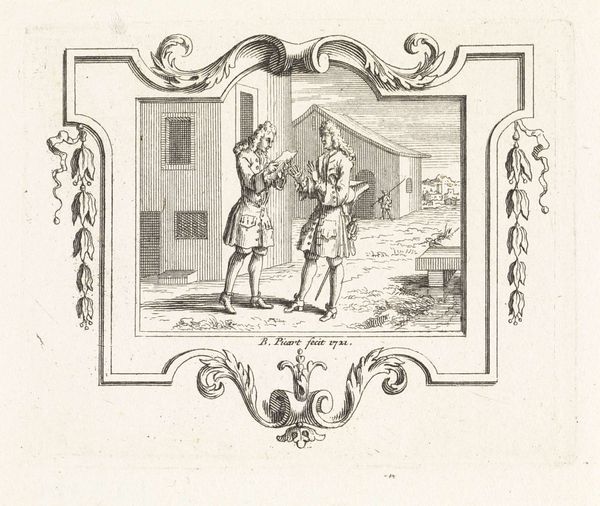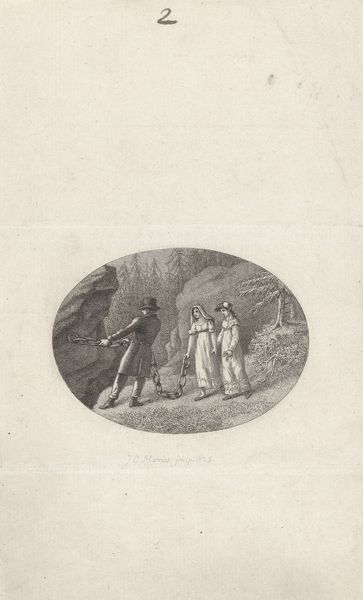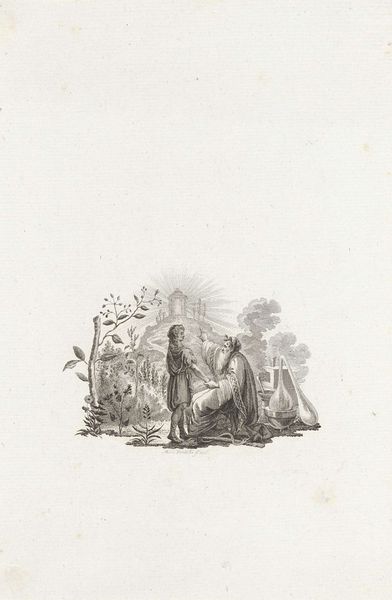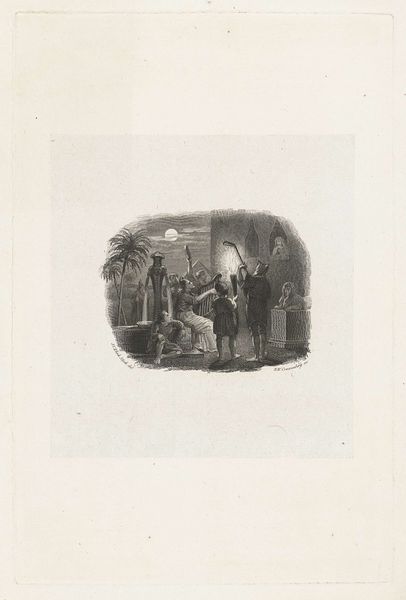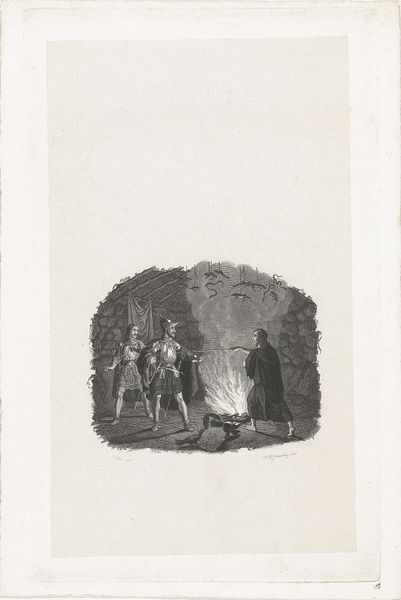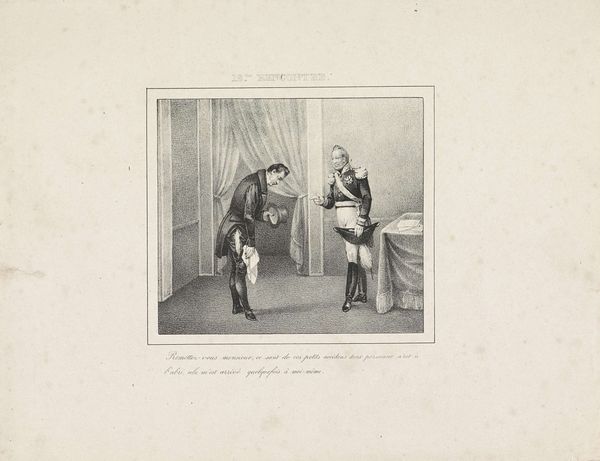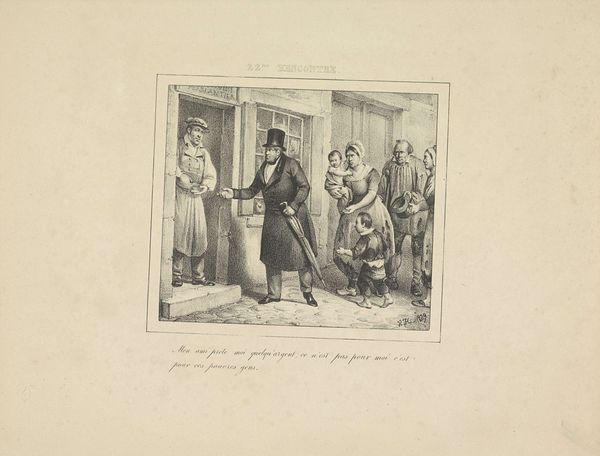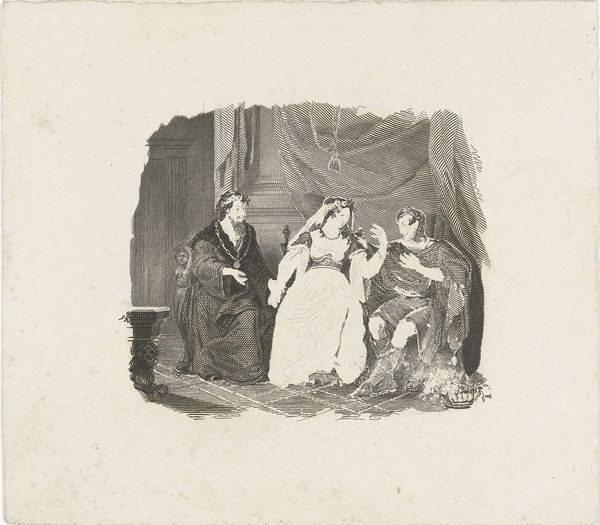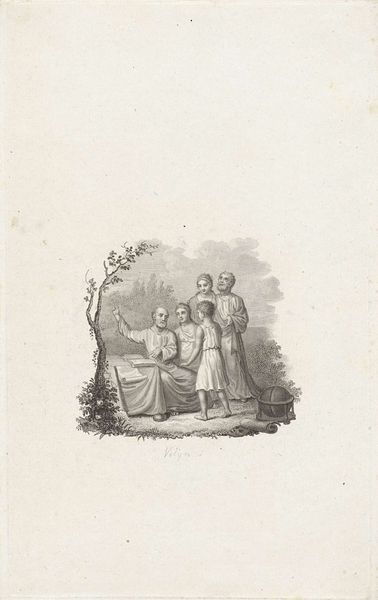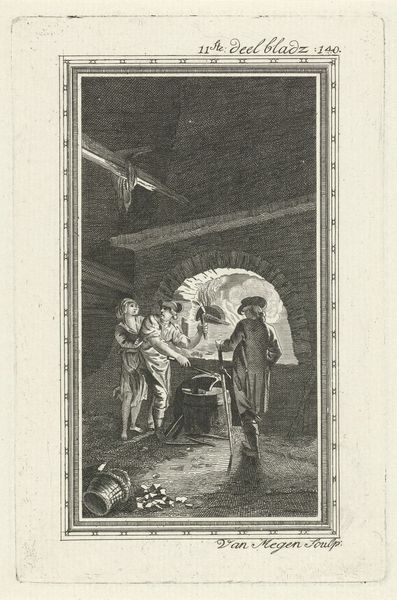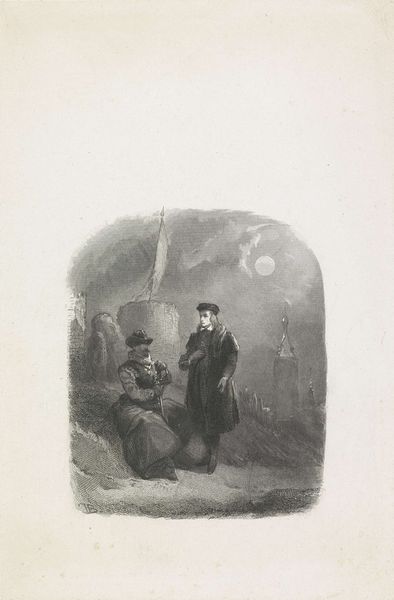
Dimensions: height 135 mm, width 86 mm
Copyright: Rijks Museum: Open Domain
Curator: Look at this drawing, titled "Twee figuren in een interieur," created in 1854 by Willem Frederik Wehmeyer. It's rendered with such fine lines and shading. Editor: Immediately, I’m struck by the formality of the scene. It’s austere, almost theatrical in its presentation, despite being a seemingly simple pencil sketch. Curator: Indeed. Wehmeyer was working during a period of significant political and social upheaval. The image depicts what appears to be a somber exchange. How do you interpret the roles of the figures in the context of that era? Editor: Well, the figure on the left, draped in what could be construed as academic robes, pointing upwards evokes ideas of ascension or judgment, linking to existing concepts of divine order. Juxtapose this with the man in the elaborate suit who seems like he is from the Ancien Régime... Perhaps this work engages with some tension between established authority and change. Curator: I think you've captured a key dynamic here. The Romantic era valued exploring themes of justice, particularly in relation to revolutionary sentiment. I agree, these contrasting figures symbolize class disparity in a crumbling political system. Note the heavy draping and shadow in this image that can evoke pathos as a central trope of this era. Editor: And look closely at how the artist rendered that bookcase with subtle linear differences to denote depth. It feels less about portraying any actual, specific location than to suggest ideas about learning, memory, history, and a fading order. I see echoes of philosophical themes explored by people like Rousseau. Curator: It reminds us that artistic choices often operate on multiple symbolic planes simultaneously. By studying these elements within their historical milieu, we can understand the layered commentaries present. Editor: I now see beyond the apparent simplicity of the scene and toward the artwork’s rich intellectual roots. Curator: And perhaps, it provokes some introspection on similar societal struggles that exist today.
Comments
No comments
Be the first to comment and join the conversation on the ultimate creative platform.
